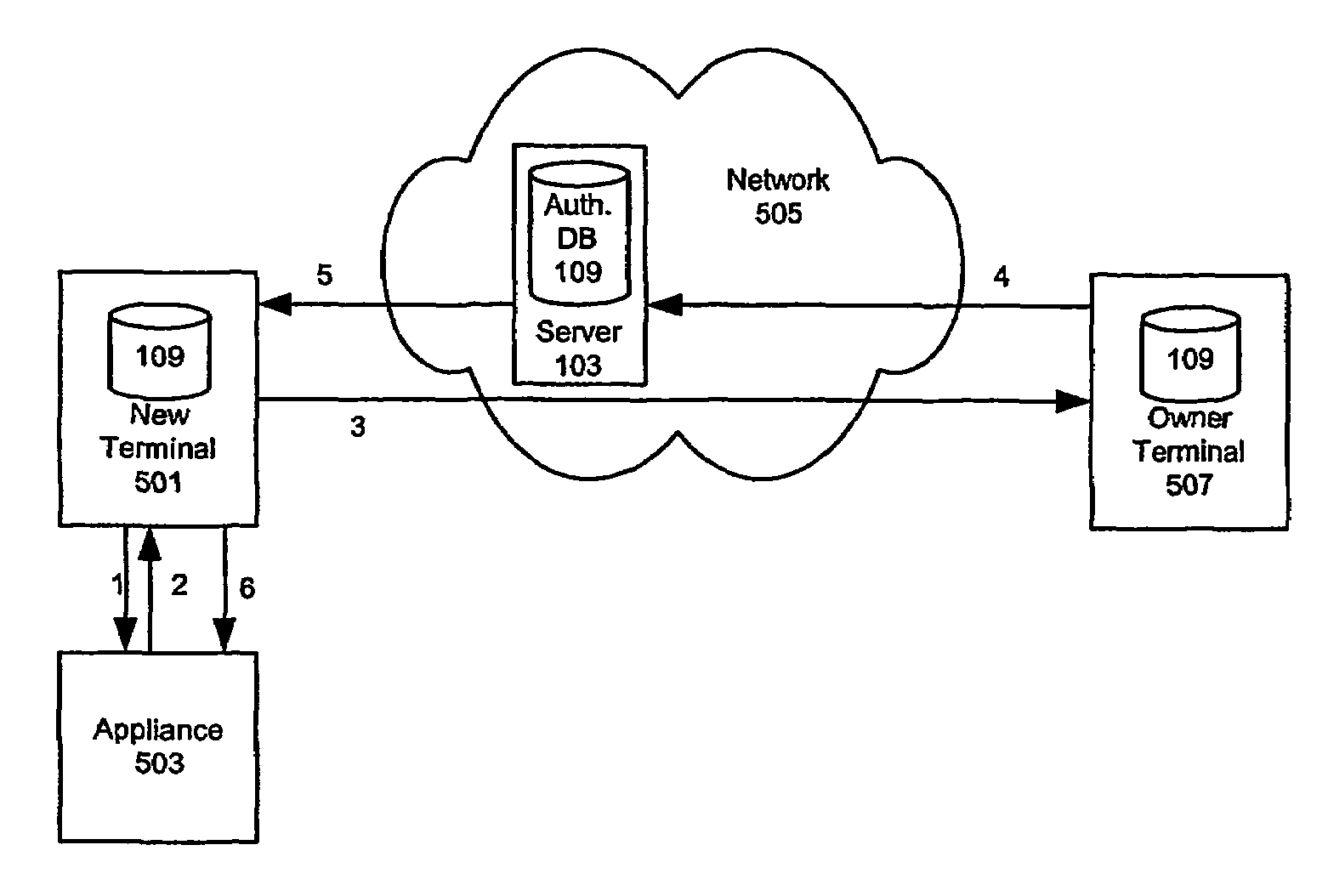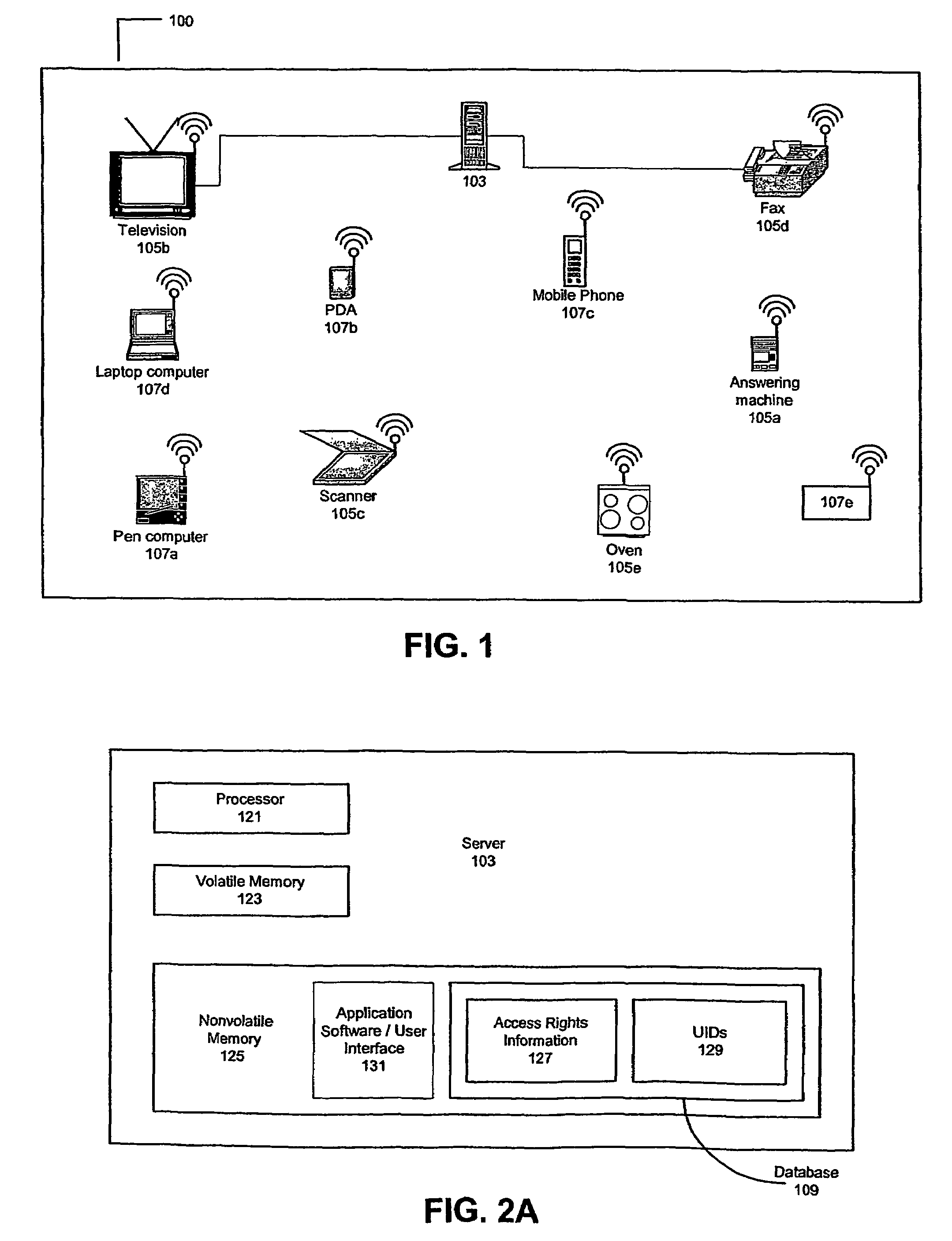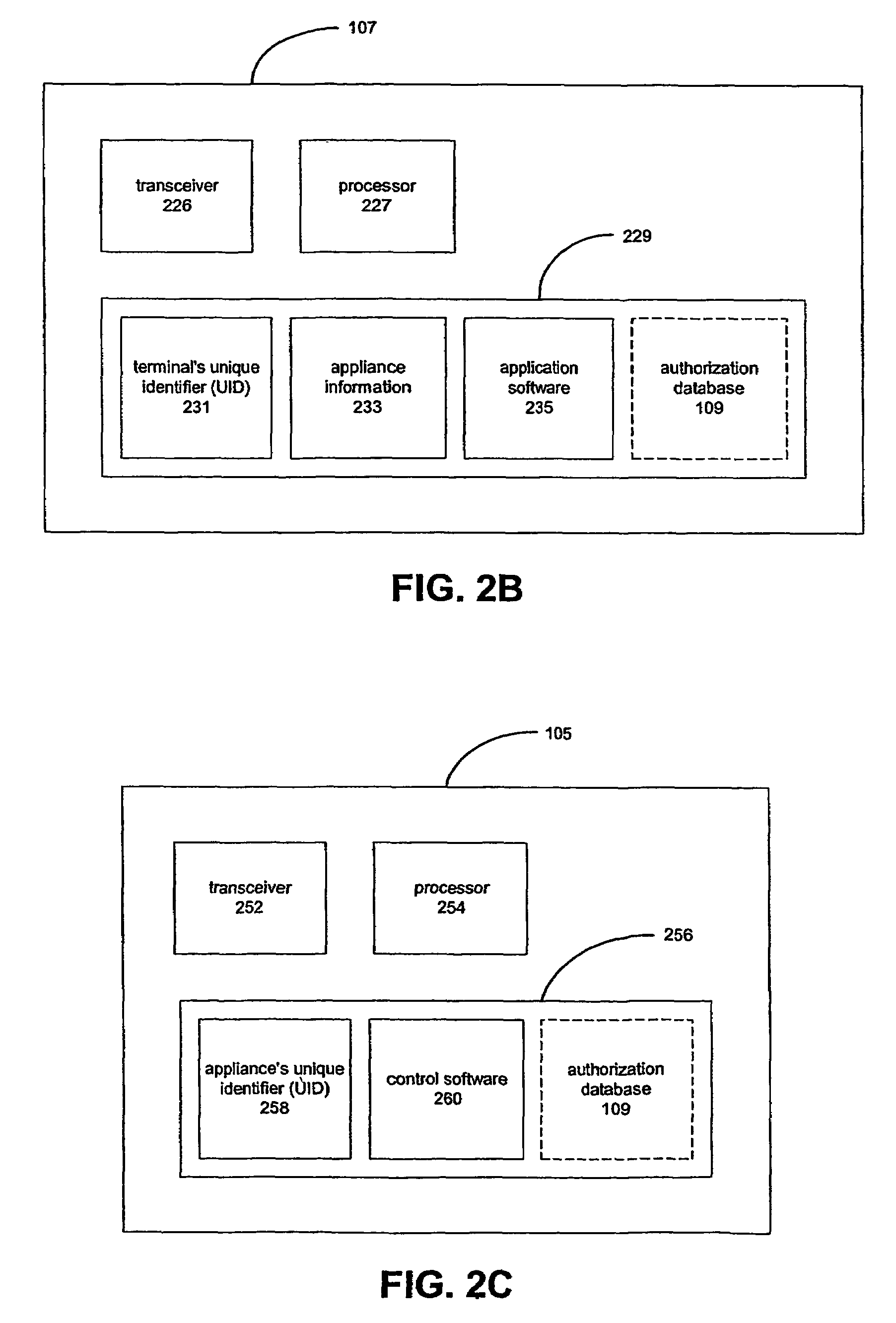Remotely granting access to a smart environment
a smart environment and remote grant technology, applied in the security field, can solve the problems of combination locks that cannot be changed by the purchaser of locks, cannot be taken away, and can't notify the owner if used without authorization
- Summary
- Abstract
- Description
- Claims
- Application Information
AI Technical Summary
Benefits of technology
Problems solved by technology
Method used
Image
Examples
Embodiment Construction
[0040]Wireless connections between devices are becoming more and more widespread. The present invention uses wirelessly connected devices to create a smart environment, e.g. homes where the various household appliances are controlled remotely by one or more controlling terminals. The terminals communicate with and control appliances using a wireless technology such as Bluetooth, wireless LAN, or Home RF. Any wireless communication technology can be used.
[0041]The invention may be embodied in a system that allows the owner of an environment to control and monitor who is using and when each person can use each appliance. The inventive system may also notify the owner whenever someone who does not have rights to use the appliances within the environment attempts to use one or more of the appliances, or optionally when a user without access rights enters the environment. The notification may be sent by a short message service (SMS), email, direct network access, instant message, alphanu...
PUM
 Login to View More
Login to View More Abstract
Description
Claims
Application Information
 Login to View More
Login to View More - R&D
- Intellectual Property
- Life Sciences
- Materials
- Tech Scout
- Unparalleled Data Quality
- Higher Quality Content
- 60% Fewer Hallucinations
Browse by: Latest US Patents, China's latest patents, Technical Efficacy Thesaurus, Application Domain, Technology Topic, Popular Technical Reports.
© 2025 PatSnap. All rights reserved.Legal|Privacy policy|Modern Slavery Act Transparency Statement|Sitemap|About US| Contact US: help@patsnap.com



